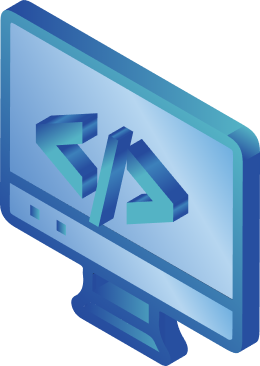278typesOptimization Project
Google Keyword Ranking And Technical Guidance Services
SZLOGIC offers full-dimensional SEO based on search engine principles, using 278 optimization projects for white-hat ranking and technical guidance to reach the core.Google SEO keyword ranking services are provided per item, with fees based on optimizing at least 3 keywords. We offer a "no upselling" policy and a ranking guarantee: full refund for no rankings, 50% for unmet rankings.
25 Link Techniques And 28 SEO Metrics Are Key To Ensuring Effectiveness.





SEO Keyword Ranking Service
Keyword Ranking Service

Keyword Library

Pillar Pages

Column Structure Planning

Page SEO Code Optimization

Brand Word Ranking

Core Keyword Ranking

Root Keyword Ranking

Content Creation
SEO/SEM Technical Guidance
SEO/SEM Operation Guidance

Column Planning

Traffic Direction/Conversion Value

Content Structure

Content Quality Assessment

Keyword Library

Google Ads Account Setup

Avoid Fatal Risks

Google Ads Delivery Strategy

Google Ads Parameter Settings

SEO And SEM Diagnostic Reports
How Search Engines Work

Difference Between SEO And SEM
01:SEO vs SEM: Advantages and Disadvantages
SEO

SEM

High Ongoing Costs
Mid to Late Stage: Stop Traffic Delivery
02: The Logic Of SEO And SEM
The Logic Of SEO
Programming Logic
- Understand the Internet's logic and technology application
- Control over search engine algorithms and signal principles
Business Logic
- Understanding of product and audience
Structural Logic
- Structure content according to search engine algorithms
Psychological Logic
- Predict audience value and potential psychological needs
- Content Output
Mathematical Logic
- Keyword Analysis
- Website Metrics
- Conversion Metrics
- GA Page Metrics


The Logic Of SEM

Business Logic
- Understanding of product and audience
Mathematical Logic
- Keyword Analysis
- CPC
- CPM
- CTR
- CVR
- CPA
- QS
- GA Metrics
Comprehensive SEO Indicators

Technical SEO
- Indexing
- Website Structure Optimization
- SEO Code Programming
- Performance Optimization
- Mobile Usability Optimization

Content SEO
- Keyword Library
- Theme Development
- Content Elements
- Content Value
- Page Optimization
- Keyword Distribution

Link SEO
- Outbound Links
- Internal Links
- Exchange Links
- Link Baiting
- Natural Links
- Press Release Link

Data SEO
- Competitor Analysis
- SEO Indicator Monitoring
- Ranking And Traffic
Matrix SEO
- Yandex
- Bing
- Baidu
- 360
- Sogou


The Optimization Project Covers All SEO Details
Link Technology
SEO Monitoring Metrics
Competitor Data Tracking
Full Code SEO vs Plugin SEO
Plugin SEO

Under the "black box" model, SEO principles are unclear, results can't be verified, leading to confusion, paradoxes, and stagnation in SEO progress.
Logic Full-Code SEO Reaches Web Core

LOGIC engineers customize backend and frontend code via CMS to manually set SEO tags per page. Keywords follow engine rules across TDU, Hn, Property, and schema. Page types are weighted for conversion, with custom XML sitemaps and index settings based on canonical rules. LOGIC's full-spectrum SEO ensures every step is clear, controlled, and effective.
SEO Content Value

Solving The Problem

Inspiration And Encouragement

Knowledge Transfer

Practical Skills

Entertainment Novelty

Cultural Exploration
AIGC-Powered SEO Content Creation
SEO Q&A
SEO stands for Search Engine Optimization, which involves creating content and strategies based on search engine rules to gain organic traffic, making it a key online marketing method.
SEO-driven traffic is the result, but the key is enabling search engines to crawl, index, and understand the site's content and structure easily. Front-end code plays a vital role, and optimization impacts how search engines interpret the site. Improper code and unstructured tags can create barriers, which can be removed through code rewriting and optimization.
SEO aims to reduce the workload for search engines by aligning website content with their guidelines, which is why SEO is necessary.
Algorithms are the automated processes used by search engines to handle data. They apply rules to index pages and perform operations to display results on the SERP. Over time, algorithms have evolved with numerous types and functions, including penalty algorithms for detecting cheating and AI algorithms for content quality assessment. These algorithms ensure the accuracy of search results and the sustainable development of search engines. As search engines continue to update and iterate their algorithms, search results will become more precise, evolving from a search engine to an "answer engine."
Signals and algorithms are closely related, influencing each other and forming key parts of many systems and processes. In many cases, algorithms rely on signals for decision-making and operations.
An algorithm is a set of rules used by search engines to process and rank web pages, while signals are data and features that measure page quality and relevance, which are fed back to the algorithm.
When a search engine receives a query, it uses algorithms to analyze signals like page content, link structure, and user behavior to determine the most relevant pages and rank the search results.
Thus, search engine algorithms rely on signals to assess page relevance and quality, with signals serving as input data for the algorithm, enabling the engine to provide the most relevant results.
The goal of SEO is to optimize a website’s content, structure, and links to create a positive user experience (positive user behavior signals), which then improve the website’s ranking on the SERP.
- Before 2015: The Era of Keyword Matching
- After 2015: The AI Era. Search engines gained the ability to assess content quality and authenticity, delivering highly relevant results that better match user intent.
Weight is the value assigned by search engines to a domain, serving as a key metric to evaluate a website. It includes DA (Domain Authority) and PA (Page Authority).
DA and PA work on similar principles. A website’s authority can be seen as its growth value, which increases based on overall quality. Higher authority boosts ranking potential for similar-topic content.
Website authority grows on a 0–100 scale, with fluctuations based on SEO efforts. The longer a domain focuses on one niche with quality content and proper SEO, the higher its authority.
A website’s structure reflects its overall hierarchy. It affects site management efficiency and search engine crawlability. A well-structured site helps crawlers work efficiently, keeps crawl budget in check, and improves indexation. Poor structure leads to wasted crawl budget and missed indexing.
A well-structured website follows a tree-like hierarchy without orphan pages. Every page should be reachable from the homepage within a crawl-friendly depth. Flatter structures are more favorable.
The sandbox effect refers to a period when new or significantly changed websites are temporarily restricted by search engines, limiting their rankings in search results.
The sandbox effect exists to prevent the abuse of SEO tactics. It stops new sites from quickly gaining high rankings through manipulative methods like spammy links or keyword stuffing. Search engines use this period to observe and evaluate a site's authenticity and content quality.
New websites in the sandbox phase may face unstable rankings, low visibility, or poor placement in search results. The duration varies by search engine—Google’s sandbox typically lasts around 6 months, while Baidu’s lasts about 2 months. During this time, SEO efforts may not yield immediate results. As the site proves its content and behavior are compliant, it will gradually exit the sandbox, and rankings may improve.
The damping factor in search engines refers to a parameter in the PageRank algorithm that controls the weight transfer system. PageRank, used by Google to assess page importance, uses the formula: PR(A) = (1-d) + d (PR(T1)/C(T1) + … + PR(Tn)/C(Tn)), where "d" is the damping factor, ranging from 0 to 1. The damping factor regulates the iterative transfer of values, gradually stabilizing the transferred values.
When a website is penalized by a search engine, it may experience a series of negative impacts, depending on the severity and nature of the penalty. Some possible outcomes include:
1. Mild Penalty
Domain Name Demotion
Page Demotion
Lowering Page Rank
2. Severe Cases
Exclude Domain Names and Pages
Some sites are penalized for primary keywords only, while secondary and long-tail keywords remain unaffected. This is often due to abnormal or spammy backlinks. Regular monitoring is needed, and if penalized, issues should be fixed and reconsideration requested.
SEO metrics should be updated according to search engine algorithms. Outdated metrics waste time and may mislead content quality or search engine judgment. Identifying what to optimize and what not to is key for effective SEO, which evolves with search engine updates. Here are some outdated SEO practices:
- Keyword Density
- keywords Tag
SEO is a key method for growing website traffic, which is why LOGIC defines it as the core of website operations. Mindset drives action—only those with a clear vision for running a website or business are truly ready to engage in digital strategy. When SEO is seen vaguely, it's often mistaken as a one-person task—a belief that hiring a single SEOer will guarantee results. But without a proper understanding of SEO, it's impossible to assess a candidate’s real expertise. This makes hiring decisions a “black box” process, often leading to confusion and loss of direction or confidence. In reality, SEO is not a solo role—it’s a team effort. That’s why LOGIC emphasizes: when SEO is understood as SEOs—a plural concept—it marks the right time for a company to begin SEO seriously.
Written for both humans and machines (search engine algorithms and signals).
It's written for humans because only by meeting human search intent can content create real value.
It's written for machines because search engines rely on algorithms and signals—only when content meets their recognition and evaluation criteria can it be shown to more people.
Search engine signals are the basis for algorithmic decisions—essentially the parameters used for judgment. Algorithms define the rules and execute actions, while signals provide the data those algorithms evaluate. Typically, when algorithms are updated, the signals evolve as well. These signals are highly granular, covering areas like domain signals, keyword signals, UX signals, web tech signals, link signals, and content signals—amounting to nearly a hundred subcategories in total.
- A domain linking to your page is essentially casting a vote to search engines, signaling that your content is valuable and trustworthy. Backlinks are the result of these vote-like recommendations.
- Providing readers with additional context and the ability to explore related content further.
- Site quality is linked to referring sites.
- SaaS Website Builder
- Open-source CMS Website Builder
- Static Website Building
Mobile-first indexing became Google's default indexing method for all websites after March 2021. Google no longer indexes desktop pages and will not provide separate notifications in GSC. Since then, Google's index data has relied solely on the mobile page index to return SERP results. In GSC's page indexing reports and crawler analysis, it's clear that Google uses the "Googlebot Smartphone" crawler. The era of desktop indexing may be over, and mobile-first indexing is the future search method for the next decade.
Baidu has not yet introduced a similar indexing update, or if it has, the information has not been publicly disclosed. The usage of mobile devices has far surpassed that of PCs. Search engine indexing updates align with the characteristics of the internet era, and since 2021, SEO efforts have shifted focus entirely from desktop to mobile.
Currently, search engines still struggle to fully understand the content of the following media files. When these files are added to a website as content, additional descriptive tags need to be included.
- Picture
- Video
- Audio
Images should use the alt tag to describe the content of the image; videos and audios require additional text scripts to describe the content, enhancing their indexability. When search engines crawl these tags, they can determine the file's content attributes and index them correctly.
Search engine penalty signals are typically related to cheating. These signals serve as criteria or indicators for penalty algorithms, helping identify websites and pages that use improper methods for SEO and negatively impact user experience. Below are common penalty signals from search engines, which, when persistent, can trigger algorithmic or manual penalties, with algorithmic penalties being the primary result.
- Slow Page Load, Page Not Opening
- Keyword Optimization Errors
- Excessive Link Swapping
- Pop Up
- The Trend Of Link Disconnection Is Obvious
- Site Hacked with Malicious Code
- Garbled Content
Search engines continuously improve their algorithms to identify and penalize inappropriate practices to enhance the quality of search results and user experience. To avoid penalties, website SEO optimization must comply with search engine guidelines, aligning the site's overall metrics with user value and better user experience.
Ⅰ、Core Web Vitals Performance Metrics
Page Load Speed
Page Interactivity
Page Visual Stability
Ⅱ、Core Web Vitals Factors
Largest Contentful Paint (LCP): Measures the time it takes for the main content of the page to load.
First Input Delay (FID): Measures the time it takes for the page to respond to user interactions with page elements.
Cumulative Layout Shift (CLS): Analyzes how the page loads and whether layout shifts unintentionally cause users to click on other elements.
Ⅲ、Data from Google Browser
Core Web Vitals also assesses how mobile-friendly your page is, whether it uses HTTPS, and if it contains intrusive pop-up ads. You can check your page's performance through the Core Web Vitals report in Google Search Console, which will rate your pages as "Good," "Needs Improvement," or "Poor." You can also use Google’s PageSpeed Insights to directly test each Core Web Vitals metric.
The 4C refers to the following forms and types closely related to content. Based on the website's content positioning and data goals, the selection of indicators for content creation is made after 4C planning. With this preparation, content creation will be more organized, and the results presented will be richer and more comprehensive.
In the application of the 4C, the first step is to define the page type. Based on the page type, select the theme and plan the content structure. The choice of content format should correspond to the SERP analysis results of the theme, making the data pursuit more targeted. The selection of content format depends on the content type and details. Finally, the content's unique selling point should be highlighted, focusing on the independent value it brings to users.
- Content style
- Content type
- Content format
- Content angle
Baidu and Google are both search engines, essentially the same thing, and the principles and methods of SEO are also the same. Similar things naturally have many similarities, such as both having quality judgment algorithms, penalty algorithms for detecting cheating, algorithms to combat spammy links, and sandbox periods, among others. There are many more similarities that won't be listed here.
The differences between the two mainly lie in the names and operational details, such as the methods of operation in their webmaster backends and the differences between GoogleBot and BaiduSpider.
The differences between search engines are primarily in operational details, such as their crawling methods, resource submission processes, and indexing approaches. For example, Google accepts XML sitemaps for indexing, while Baidu does not. However, these are not fundamental differences; they are just operational nuances. In fact, Baidu and Google are highly aligned, and typically, when Google rolls out a significant algorithm update, Baidu and other search engines tend to follow suit at a later time. This pattern is not limited to Baidu and Google but also applies to Bing and Google. Therefore, the differences between search engines mainly lie in the "techniques" they use, while on the "principle" level, they are fundamentally the same.
A Marketing Director's Words of Wisdom

Contact
Get In Touch
Address
G232, Chuangfu Harbor, 2/F, Zone B, Zhifu Plaza, Gushu Huating, Gushu 1st Road, Xixiang, Bao'an District, Shenzhen, China.
info@szlogic.net









